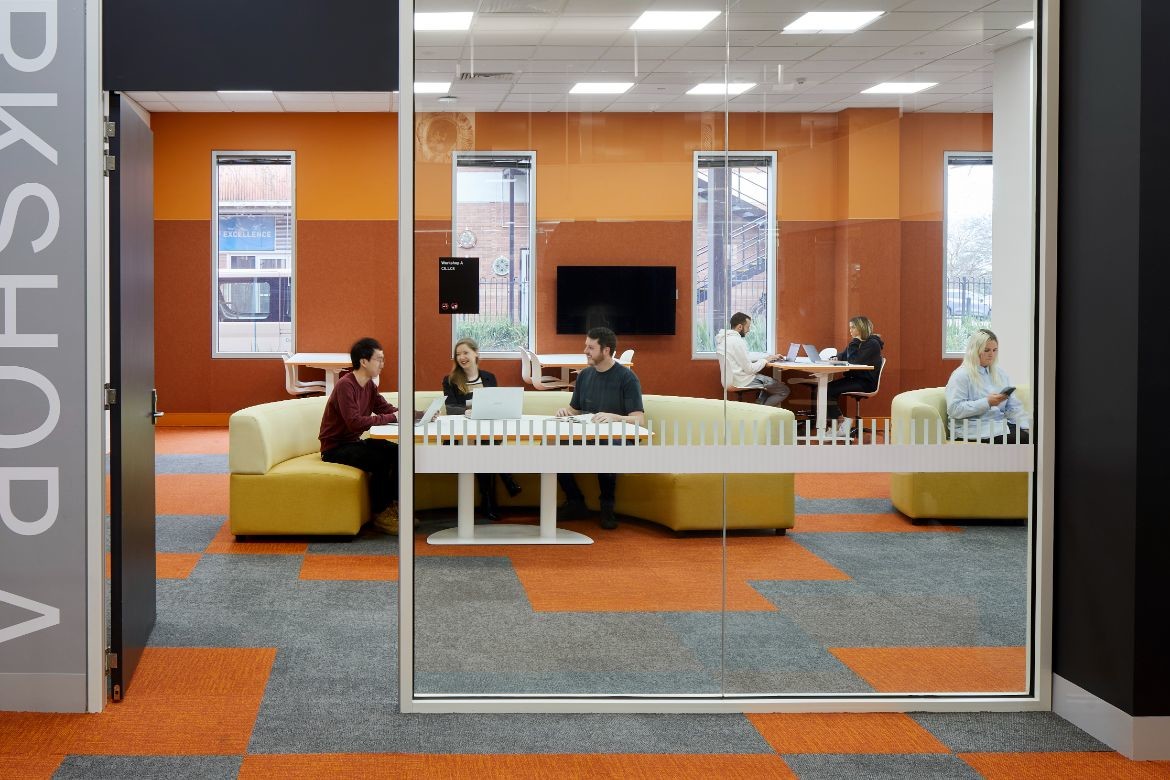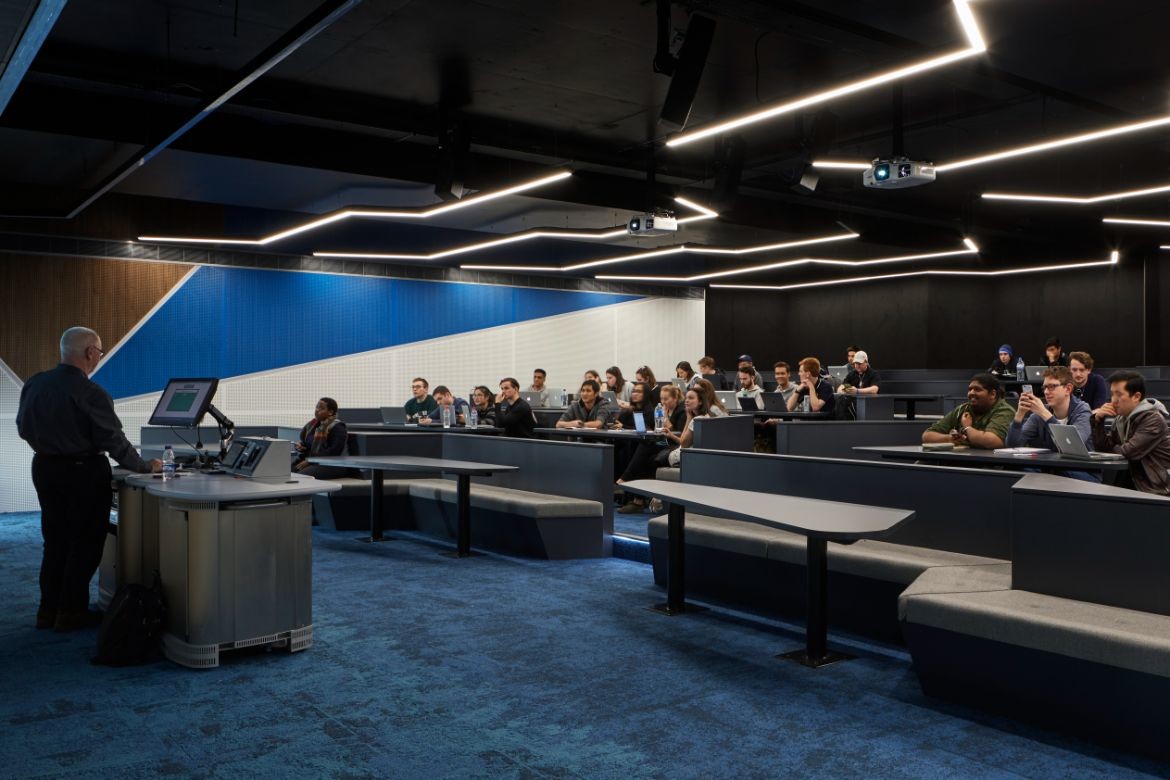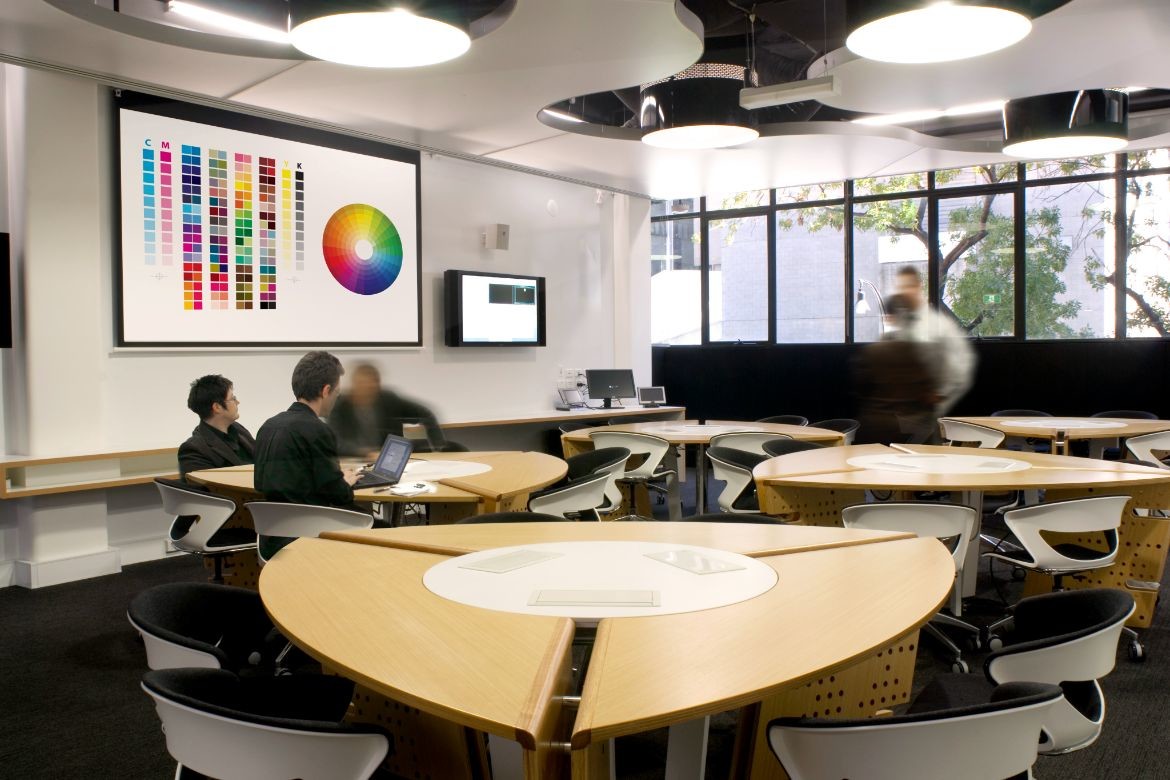Spowers is a Victorian design practice, delivering architecture, interior design and masterplanning across a range of sectors. Hear director Scott Allardyce’s take on equitable hybrid learning environments.

Scott Allardyce, photograph by Dianna Snape.
February 16th, 2023
The university sector has changed drastically over the past decade or so. The introduction of Massive Open Online Courses (MOOCs) provided an alternative to traditional bricks-and-mortar campuses. Fast forward to pandemic-induced lockdowns and yet again the spotlight turned to online learning. But where are we now? And how can online and offline learning environments be better integrated to fortify the sector for its future growth and prosperity?

Q: What are the key design challenges when attempting to merge offline and online learning experiences?
Scott Allardyce: As designers, our ambition is to create ‘equitable’ spaces. These are environments where students and teachers enjoy an equal level of participation and engagement — whether they are physically present in the classroom or logging on as ‘virtual’ participants.
In a classroom, or any peer-to-peer learning environment, we must be careful to ensure the technology doesn’t overwhelm or dominate the space. Seamlessly tethering the technology to the design is key to supporting the learning and pedagogy.
Acoustics are also a major challenge for classrooms where small groups (of five or six students) are working together simultaneously. These can be quite noisy environments. We’re currently researching better ways to circumvent audio ‘feedback’ so online participants can more comfortably and actively engage with these groups in the classroom.
Related: Scott Alterator on designing learning environments

Q: What are some common misconceptions about designing contemporary tertiary learning environments?
Scott Allardyce: I think there’s a lot of confusion around ‘flexible’ design. Whenever stakeholders request flexibility, I always drill down to uncover exactly how they wish to use the space. Are they seeking a flexible space to accommodate various functions or — more literally — flexible furnishings that can be relocated within the space? These are critical questions. Imagine being an academic arriving to teach a class and having to spend the first 15 minutes of that class moving furniture to suit your teaching style! That’s why a thorough briefing process, from the outset of an education project, is so important.
Another misconception is ‘hi-tech is best’. Whilst digital technologies receive a lot of attention, some designs benefit from an analogue component too. Whiteboards, writeable tabletops and a myriad of other more ‘traditional’ teaching tools should all be considered. Why? So all participants, both student and academics, can pivot between a range of modalities, based on their preferred way to engage within that learning setting.

Q: If you had to nominate one essential element for designing more equitable hybrid learning environments, what would it be?
Scott Allardyce: Stakeholder engagement must be prioritised. Our design strategies are shaped by an in-depth understanding of the needs of lecturers, tutors, academics and students. The best results are achieved when we engage with both offline and online stakeholders to uncover their aspirations and pain points. Broadly, we are designing for universities. However, respecting the human experience of those institutions (across all of their delivery methods) is critical to shaping inclusive, future-focussed designs.
Spowers Architects
www.spowers.com.au

We think you might like this story on the 13 firms who are September’s On The Move.
A searchable and comprehensive guide for specifying leading products and their suppliers
Keep up to date with the latest and greatest from our industry BFF's!

BLANCO launches their latest finish for a sleek kitchen feel.

Elevate any space with statement lighting to illuminate and inspire.

The Man x Machine x Material collaboration by Jarrod Lim and The American Hardwood Export Council explores how generative AI can enhance design processes while also revealing the areas where human intuition remains irreplaceable.

In this candid interview, the culinary mastermind behind Singapore’s Nouri and Appetite talks about food as an act of human connection that transcends borders and accolades, the crucial role of technology in preserving its unifying power, and finding a kindred spirit in Gaggenau’s reverence for tradition and relentless pursuit of innovation.

It’s been an extraordinary ten years of exemplary projects from Studio Tate, and accolades go to Alex Hopkins and the team for an exemplar decade.

Italian furniture brand Pedrali is known for leading the way when it comes to the workplace. We speak with Busetti Garuti Redaelli design studio about the evolution of the Buddy collection – a solution for hybrid spaces that can support all sorts of working styles.
The internet never sleeps! Here's the stuff you might have missed

Knoll’s revolutionary legacy, from its pioneering mid-century modern origins to its current place within the MillerKnoll collective, continues to shape the spaces we inhabit. Here, we explore the iconic institutions, influential collaborations, and groundbreaking ideas that have shaped Knoll’s unique understanding of the human-space connection — the bedrock of the brand’s enduring relevance.

In this candid interview, the culinary mastermind behind Singapore’s Nouri and Appetite talks about food as an act of human connection that transcends borders and accolades, the crucial role of technology in preserving its unifying power, and finding a kindred spirit in Gaggenau’s reverence for tradition and relentless pursuit of innovation.